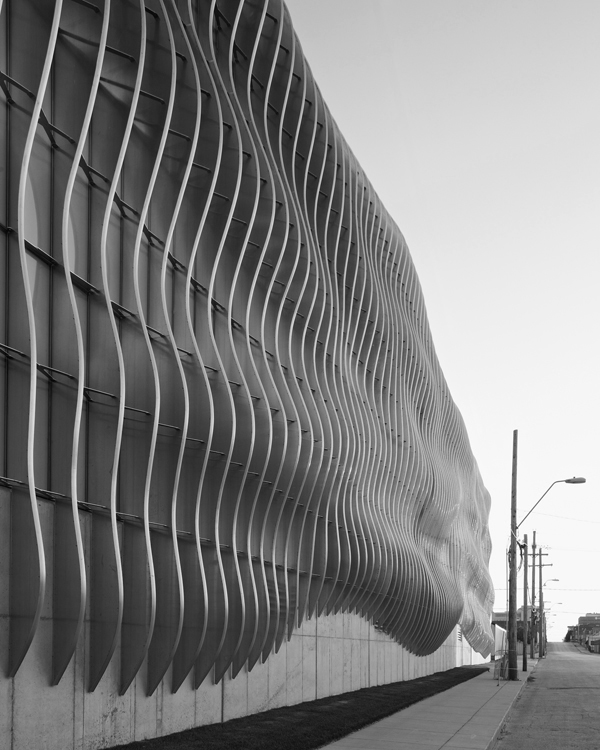
Brief.
The assignment was to replicate the logic behind of a parametric façade of our choosing and generate a pseudo code and a Grasshopper script.
The Zahner Factory Expansion was designed by Crawford Architects back in 2011. The façade consists on a series of panels vertically oriented that create a wavy aspect thanks to the noise generated by the smooth curvatures of the panels.
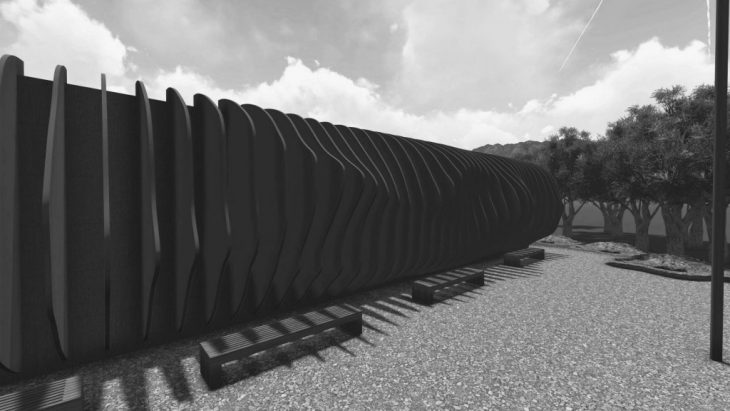
Tutorial and comprehending the logic of creating a façade.
Comprehending the logic of creating a façade as the Zahner Factory Expansion was a challenge mainly because the movement of the panels. in order to understand the movement, I research on different ways of achieving these geometries and the best was a script to create a parametric bench with a series of panels on the Z plane.
In order to understand the script, I reversed engineered the process to altered the façade and the movement with different parameters and techniques.
Creating the Pseudo Code.
1.Create an arch.
2.Establish the length on the X plane.
3.Generate a series of frames on the surface according to the X plane.
4.Establish the main point of the frames created on point #3.
5.Use a series of slider to change the location of the point on the X and Y plane.
6.Create a series of numbers out of the points generated before.
7.Create a 3D object from the series of numbers.
8.Take the average of the point to generate a smother surface.
9.Create a new surface from the points generated on #8.
10.Slide the new surface in the amounts of sections desired.
11.Extrude each section the amount desired using a slider.
12.Close the volumes using the cap command.
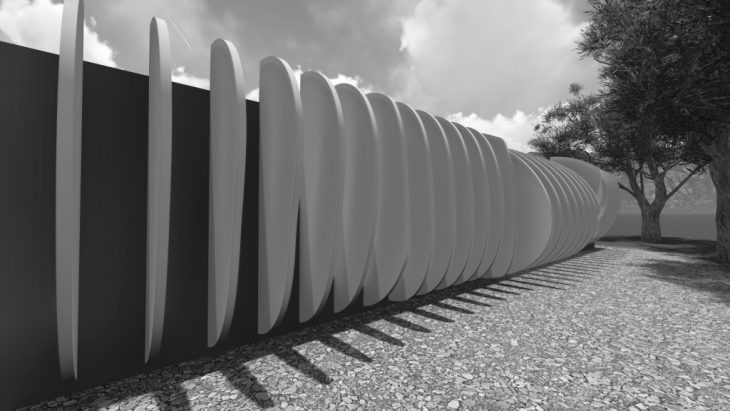
Test #1 Points of Attraction.
After creating the surface, I used 4 points of attractions to move the panels and affect the height creating 4 different typology of panels giving the impression of movement on the façade.
For more movement I think using more point of attraction would have created a better pattern, and maybe a more similar façade to the one of the Zahner Factory Expansion.
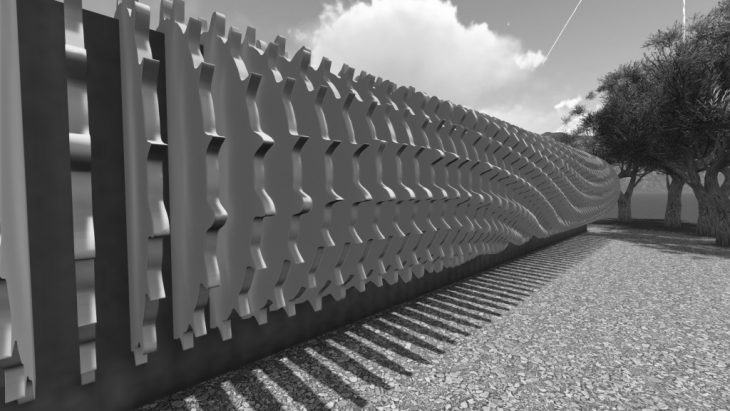
Test #2 Image Sampler.
Test number 2 was interesting because the use of the image sampler gives a nice movement if you chose the right image with the right pattern.
The movement generated by the image sampler creates a smooth and continuous movement witch works perfect on the façade.
I know it’s not exactly the same as the Zahner Factory Expansion but it mainly because of the image I choose, the right image should be able to replicate the effect of that factory.
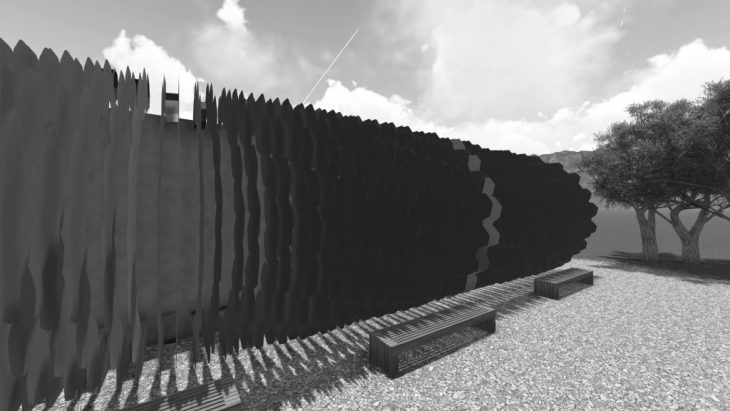
Test # 3 Image Sampler + polygon.
The principle of this test is the same as the one in test #2 using an image sampler, but for an additional distortion I use a polygon on the YZ plane to create a different effect.
To be honest I didn’t know what to expect when doing test # 3 but at the end it works fine. Its nothing like the factory façade but the logic behind it is the same, to have a series of panels and create noise trough the XZ plane of the panels.
Conclusions
For every façade I think there are many different ways of achieving the end result, it’s just a matter of moving the parameters and understanding the logic of what you want to generate.
Institute for Advanced Architecture of Catalonia
MAA02 2018-2019.
Faculty: Rodrigo Aguirre, David Leon and Danil Koshelyuk
By: Ricardo Lichtle
For more information about the tutorial visit
https://www.grasshopper3d.com/forum/topics/parametric-bench-1
For more information about the architect.
http://www.crawfordarch.com/
